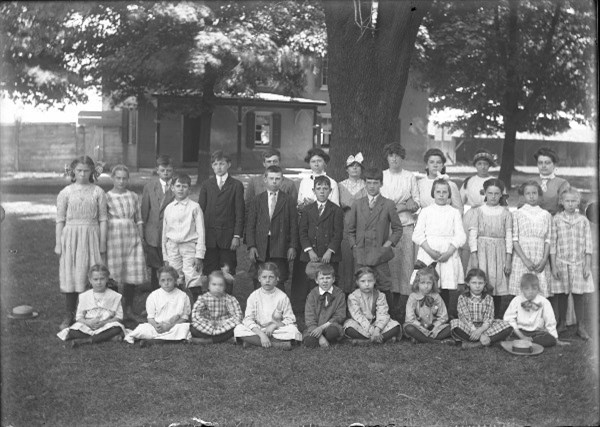The Byberry Schoolhouse (Historical)

Byberry Schoolhouse
Today, the Byberry Schoolhouse continues (for over 300 years) to be a resource for equal opportunity access to high quality childcare via a structured pre-school program. Visit
Kinder Academy for more information about the exceptional program that is offered in our historic schoolhouse.
The first record of a formal school building in Byberry Township was next to the Meeting House in 1710, and run by the Meeting. A monthly fee was required except for those in need.
In 1776 one of the Friends, John Eastburn, bequeathed his estate to establish a school fund. The Fund was used immediately to construct a new schoolhouse in the location. It was so successful that it quickly required an addition and was outgrown again by the 1823, when the present schoolhouse was constructed.
In the present Schoolhouse, the first floor was a designated classroom to hold 50 students. The second floor purposely constructed as the new location for the Byberry Library, founded 1794.
In 1827, the girl’s school needed a new space to the second floor was divided to include a very small classroom. The girl’s school moved to a new location in 1837.
Due to the size of the Township, the Byberry Friends constructed other small schoolhouses in the surrounding areas before the end of the 18th century.
Each of the schoolhouses were named for their surroundings such as Walnut Hill and Maple Grove and on the Meeting grounds, Byberry School.
The Byberry Friends ran the schools until 1837 when the Township Supervisors took control. Only the Byberry School remained with the Friends. Due to disrepair, the other school buildings were replaced by three new schoolhouses constructed by the Supervisors in 1847. One in Mechanicsville was changed to a “school for the colored” in 1849. That schoolhouse was replaced in 1866.
Byberry School had a number of excellent teachers and was respected for teaching subjects such a geometry, grammar and algebra. These were beyond the typical schooling for rural children which was generally confined to basic writing and arithmetic.
The most famous of the teachers was John Comly. He is a widely recognized figure in Quaker history not because of his teaching but his role in the Separation of 1827 ("the schism"). However, his role in education should not be ignored. He taught at Byberry twice, first in the 1790s. He left for one year to teach at the Westtown School in Chester County, where he met his wife, before coming back to Byberry School in 1804. Upon his return he added Latin and Greek to the curriculum. In 1803, he authored his first educational book. Since that time, he wrote numerous books on grammar, spelling and a Reader, an advanced textbook to help students practice the lessons of other subjects. These books were revised, reprinted and distributed around the country into the late 19th century. Original copies of the book are available in the Byberry Library.
Susan Vorwerk, 2/25/2020